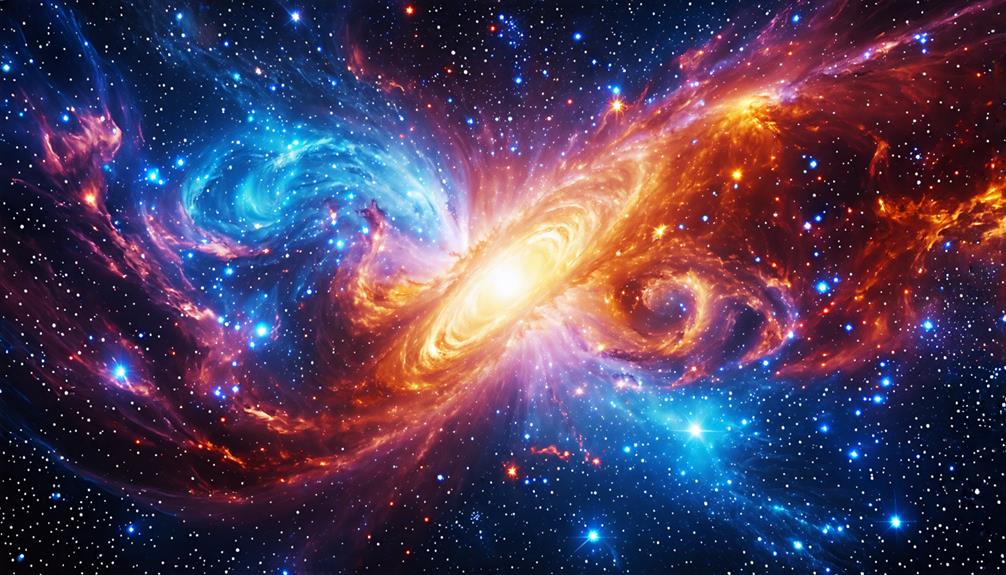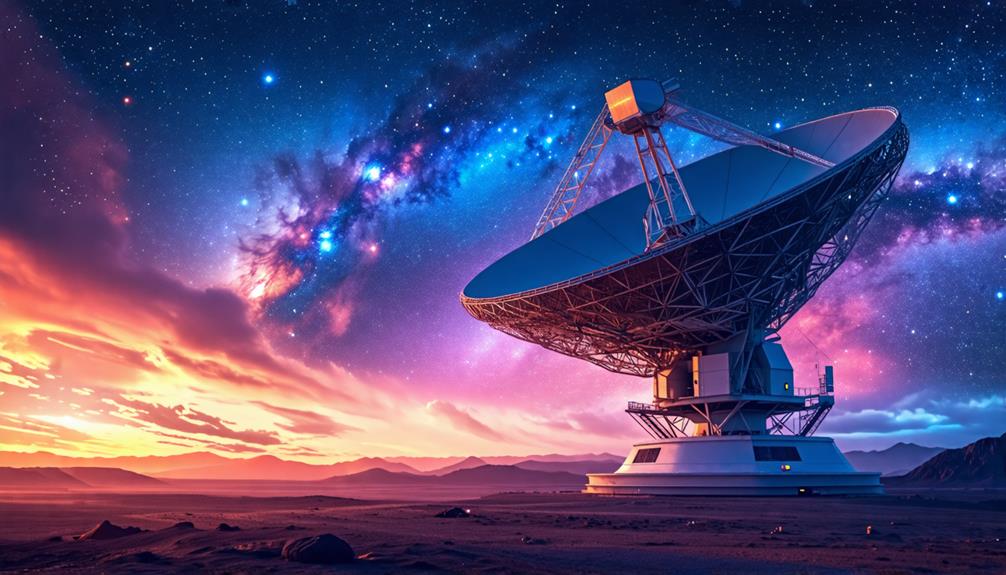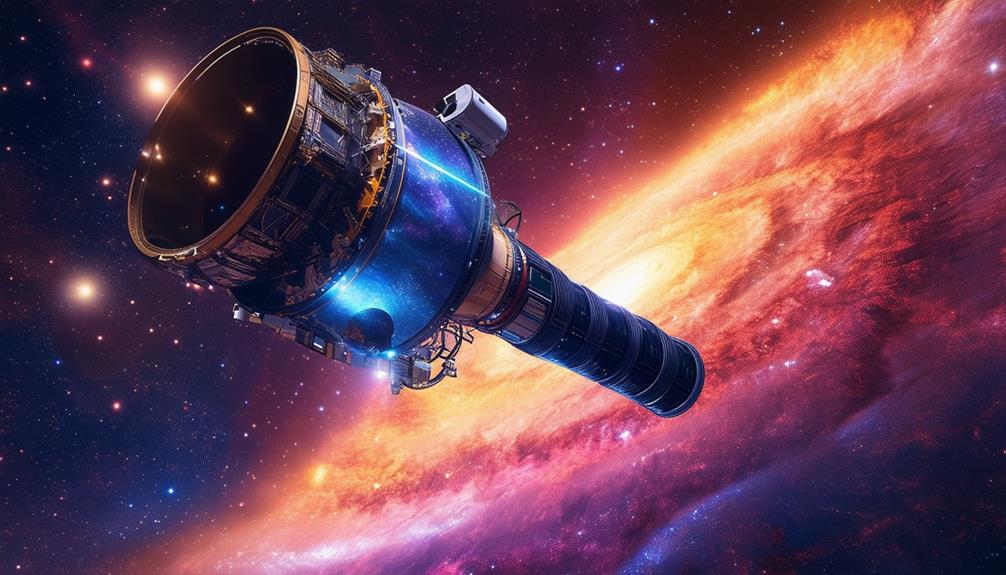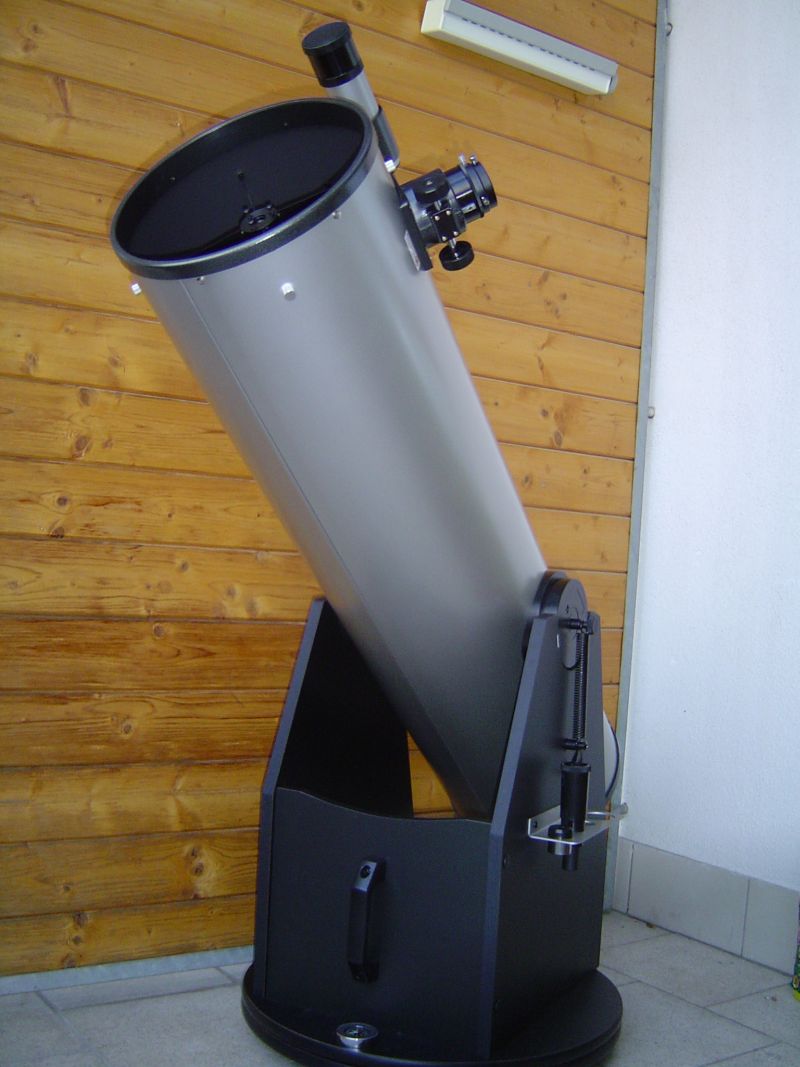The Evolution of Telescope Technology: From Galileo to Modern Day
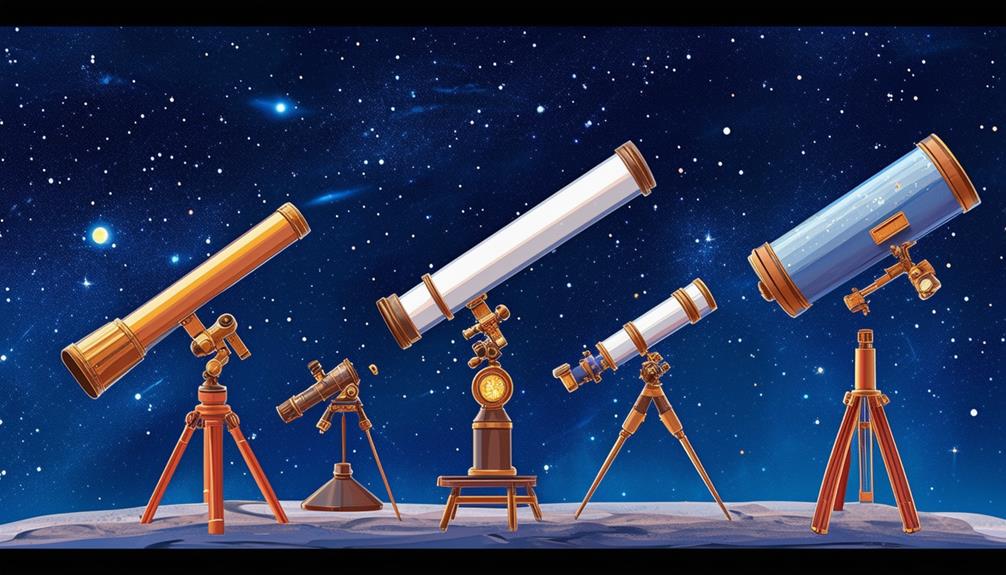
Imagine standing in Galileo's shoes, peering through a rudimentary telescope and glimpsing moons orbiting Jupiter for the first time. Fast forward to today, where we observe the universe through advanced instruments like the Hubble Space Telescope. The journey from simple lenses to complex space-based observatories illustrates humanity's relentless quest for knowledge.
But how did we progress from Galileo's basic designs to the cutting-edge technology of modern telescopes? To understand the significant advancements and challenges overcome, let's explore the pivotal developments that have shaped this fascinating evolution.
Galileo's Early Discoveries
Galileo's early discoveries revolutionized our understanding of the cosmos. In the early 17th century, he was one of the first to systematically use telescopes for celestial observations. He meticulously documented his findings with detailed sketches, which were published in his seminal work, *Starry Messenger*, in 1610.
When Galileo aimed his telescope at Jupiter, he discovered its moons—Io, Europa, Ganymede, and Callisto. This was a groundbreaking revelation, as it provided strong support for the heliocentric model of the solar system, challenging the geocentric view that had dominated for centuries. Observing these moons demonstrated that other celestial bodies could have their own satellites.
Galileo also observed the Moon, revealing its mountains and craters. These findings contradicted the prevailing belief that celestial bodies were perfect, unchanging spheres. Additionally, he observed sunspots on the Sun, offering further evidence that the heavens were more dynamic than previously thought.
Although telescope technology has advanced significantly since Galileo's time, his pioneering efforts laid the foundation for modern astronomy. His early discoveries and detailed sketches continue to inspire astronomers to explore and understand the vastness of space.
Innovations in Telescope Design
Advances in telescope design have profoundly enhanced our ability to observe and understand the universe. From Galileo Galilei's refinements of Hans Lippershey's early designs to Sir Isaac Newton's invention of the reflecting telescope, which solved the problem of chromatic aberration, each innovation has been pivotal. Further advancements came with Carl Kellner's introduction of the achromatic lens in 1849, significantly improving image quality.
Jesse Ramsden's development of the eyepiece in 1783 marked another leap forward, offering clearer and more precise observations. Léon Foucault later revolutionized reflecting telescopes by boosting their light-gathering capabilities and reducing optical distortions, making them more powerful and accurate. In 1930, Bernhard Schmidt introduced the Schmidt camera, optimized for wide-field astronomical photography, expanding the scope of observational astronomy.
The early 20th century also saw the co-creation of the Ritchey-Chrétien telescope by George Willis Ritchey and Henri Chrétien, a design now fundamental to professional observatories due to its superior optical performance. Each of these innovations, building on the work of their predecessors, has expanded our understanding of the cosmos and continues to inspire future advancements in telescope technology.
Reflecting Vs. Refracting Telescopes
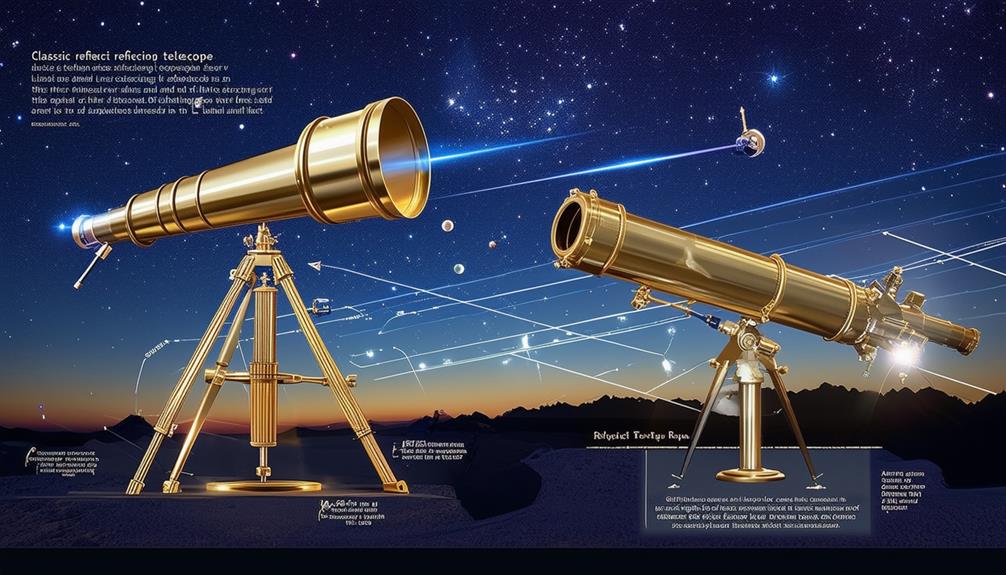
Building on historical innovations, let's examine the differences between reflecting and refracting telescopes and understand why modern astronomy often favors reflecting telescopes over refracting ones.
Reflecting telescopes, pioneered by Sir Isaac Newton in 1668, use mirrors to gather and reflect light. This design reduces chromatic aberration, a common issue in refracting telescopes where lenses bend light and cause color distortions.
Refracting telescopes, while historically significant, have limitations due to their lenses. Large lenses are challenging to manufacture without imperfections, leading to reduced image quality. Additionally, the size of lenses is constrained, limiting the telescope's ability to capture distant celestial objects clearly.
In contrast, reflecting telescopes offer superior image quality, especially for deep space observations. Mirrors can be constructed much larger than lenses without the same level of imperfections, allowing astronomers to observe faint and distant objects with greater clarity.
Modern reflecting telescopes, such as the Hubble Space Telescope, exemplify these advantages. Their ability to minimize chromatic aberration and utilize larger apertures makes them indispensable tools for contemporary astronomy.
While both types of telescopes have their place in history, reflecting telescopes are often preferred for their advanced capabilities and fewer limitations.
Space-Based Observatories
Space-based observatories, such as the Hubble Space Telescope, have revolutionized our understanding of the cosmos by providing clear views unobstructed by Earth's atmosphere. By bypassing atmospheric distortions that affect ground-based telescopes, these technological marvels have enabled groundbreaking discoveries.
The Hubble Space Telescope, a cornerstone of NASA's Great Observatories program, has provided images and data that have significantly expanded our knowledge of deep space.
The James Webb Space Telescope, a forthcoming leader in space-based observatories, promises to extend our observational reach even further. With its advanced capabilities, it aims to explore deeper into the universe, uncovering secrets that have previously eluded us. This advancement builds on the legacy of earlier missions, such as the Orbiting Astronomical Observatory 2, which pioneered space-based observations.
To understand the impact of space-based observatories, consider these points:
- Unobstructed Views: Free from atmospheric interference, they offer unparalleled clarity.
- Extended Wavelength Range: They can observe wavelengths blocked by Earth's atmosphere.
- Continuous Observation: They provide uninterrupted views, essential for deep space exploration.
- Groundbreaking Discoveries: They've led to significant insights into the universe's structure and origins.
Future of Telescope Technology
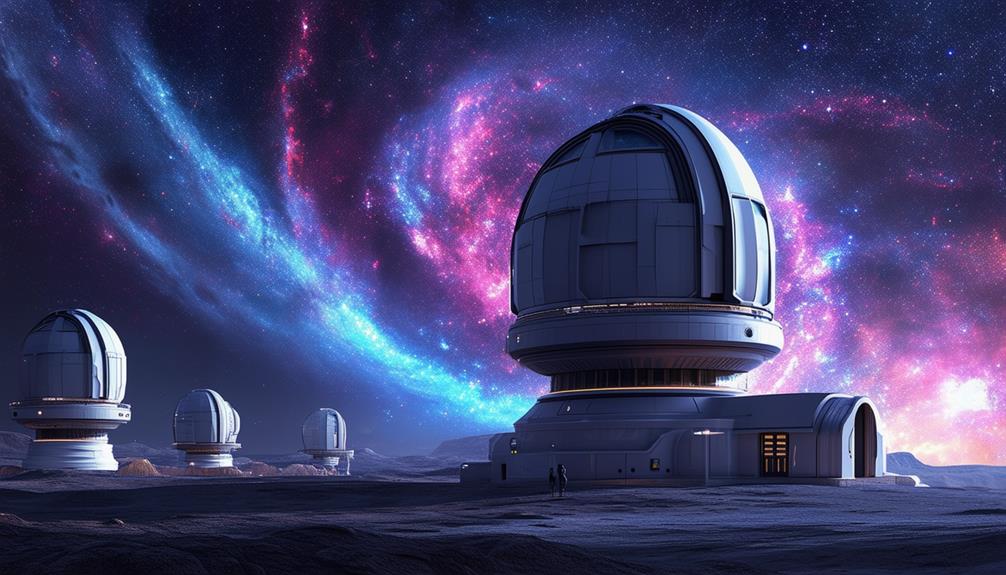
The future of telescope technology promises to reveal new frontiers in our understanding of the universe, offering even sharper and deeper views of the cosmos. Future telescopes are set to unveil unprecedented possibilities for investigation, pushing the boundaries of human knowledge in space exploration. These advancements aren't just incremental but revolutionary, driven by continuous innovation in the field.
Technological developments such as adaptive optics, advanced mirror designs, and new forms of detectors will result in remarkable improvements in telescope functionality and clarity. These upgrades will allow us to peer further into the cosmos, identifying celestial objects and phenomena previously beyond our reach.
Moreover, future telescopes will play a vital role in answering some of the most profound questions about the universe. From searching for exoplanets with the potential for life to delving into the mysteries of dark matter and dark energy, the advancements in telescope technology will be pivotal.
As humanity's curiosity drives us to investigate these cosmic frontiers, the improvements in telescope technology reflect our enduring quest for knowledge. The future of telescopes isn't just about seeing farther; it's about understanding more deeply, inspiring new generations in the exploration of the cosmos.
Conclusion
You've journeyed from Galileo's pioneering telescopic observations to today's sophisticated technology. Each advancement, whether in reflecting or refracting telescopes, has expanded our understanding of the cosmos. Space-based observatories have further extended these horizons. Looking ahead, future developments promise to unveil even more cosmic mysteries. So, keep your eyes on the stars—the best in telescope technology is yet to come.

